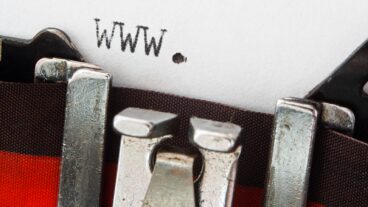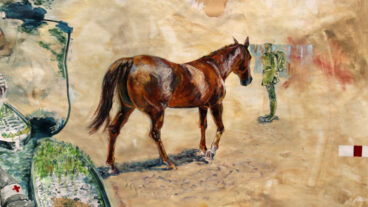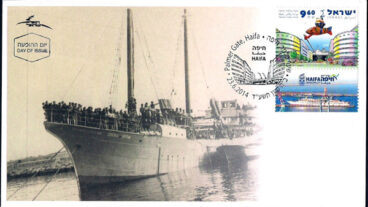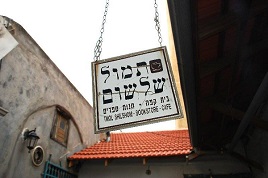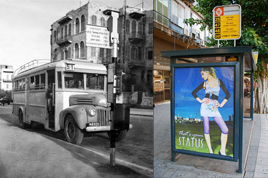Tomorrow, the Hebrew University of Jerusalem will launch the all-new, expanded and digitized Albert Einstein Archives. The launch is timed to coincide — give or take 5 days — with Einstein’s March 14th birthday, also known as Pi Day (3.14 — get it?).
Over 80,000 records of documents held in original and as copies in the Albert Einstein Archives at the Hebrew University (AEA) and at the Einstein Papers Project at Caltech (EPP) can now be accessed with a user-friendly interface via the internet.
The Archives include scientific writings and correspondence, non-scientific writings and correspondence, family letter and travel diaries. The website also presents images Einstein’s handwritten manuscripts, correspondence, typewritten manuscripts, photos, audio material, etc.
The University’s public affairs office states that, in addition to being an essential resource for the history of modern physics, “the archives also shed light on the social, political and intellectual history of the modern world.” Some of the newly digitzed documents inlcude: Einstein’s letter to Azmi El-Nashashibi, the editor of the newspaper Falastin, suggesting a solution to the Arab-Jewish conflict, a letter to the Jewish community in Berlin describing the distinction between Jewish religion and Jewish nationalism, a speech to a Zionist meeting containing a report on a fundraising campaign in the United States for the Hebrew University, a postcard to his sick mother and a letter from his young mistress Betty Neumann.
The online image gallery was created by Ardon Bar-Hama who has photograped an impressive list of some the world’s most treasured objects in libraries, museums, archives, private collections and institutions.
The system offers easy navigation, displaying the search results and additional information such as filters, related topics and similar items. Some of the digitized documents are accompanied by annotated transcriptions and translations, as edited by the EPP and published in the Collected Papers of Albert Einstein by Princeton University Press (PUP). These documents are searchable as full text.
It’s a far cry from Einstein’s original filing system which was “unsystematic” according to the Archive’s History, before his Theory of Relativity came to public attention. “As a result of his dramatic rise to fame in November 1919, his correspondence increased vastly and he employed his step-daughter, Ilse, as his first secretarial assistant. She achieved the first semblance of well-ordered files.
“In April 1928, [secretary] Helen Dukas came to work for Einstein and began to preserve his papers more systematically. However, not even then were copies of all outgoing correspondence kept. Shortly after the Nazis’ rise to power in 1933, Einstein’s papers were rescued from Berlin by Einstein’s son-in-law, Rudolf Kayser, with the help of the French Embassy. The material was brought to Einstein’s new home in Princeton and kept there until well after his death. With a few exceptions, the material left at Einstein’s summer house in Caputh outside Berlin was destroyed in order to prevent it falling into the hands of the Nazi authorities.
“Einstein’s Will of 1950 appointed his secretary, Helen Dukas, and his close associate, Dr. Otto Nathan, as trustees of his estate. Following Einstein’s death in 1955, Dukas and Nathan devoted themselves tirelessly for a quarter of a century to organizing the papers and acquiring additional material. As a result of their efforts, the Archives grew threefold.
“In the 1960s, Helen Dukas and Prof. Gerald Holton of Harvard University reorganized the material, thereby rendering it accessible to scholars and preparing it for eventual publication in The Collected Papers of Albert Einstein, a joint project of The Hebrew University and Princeton University Press. To facilitate editorial work, the papers were transferred from Einstein’s home to the Institute for Advanced Study in Princeton.
“In 1982, the Einstein Estate transferred Einstein’s personal papers to the Jewish National & University Library in Jerusalem. President Avraham Harman of The Hebrew University and Prof. Milton Handler of the American Friends of The Hebrew University played a crucial role in securing the transfer of the material to Jerusalem. In subsequent years, additional material was dispatched from Einstein’s Princeton residence, namely his personal collections of reprints, photographs, medals, and diplomas as well as his private library.
“In 1988, the Bern Dibner Curatorship for the running of the Albert Einstein Archives was established by the Dibner Fund of Connecticut, USA… In January 2008, the Archives became part of the Hebrew University’s Library Authority, Library Authority and, in July 2008, moved to new premises in the Levi building on the Hebrew University’s Edmond J. Safra campus, allowing for enhanced services to the public.
The www.alberteinstein.info website was launched in 2003 by the Albert Einstein Archives jointly with the Einstein Papers Project and Princeton University Press. The digitization of 900 papers displayed on the original site was made possible by a generous contribution from the David and Fela Shapell Family.
A grant from the Polonsky Foundation of London enabled the Hebrew University of Jerusalem to digitize the archives. The archival database and the collection of new materials was made possible by the National Science Foundation, the National Endowment for the Humanities, and by the Arcadia Fund UK.
The launch will be marked simultaneously at Princeton University, Caltech, the Hebrew University’s Friends organizations and Israeli embassies around the world.






